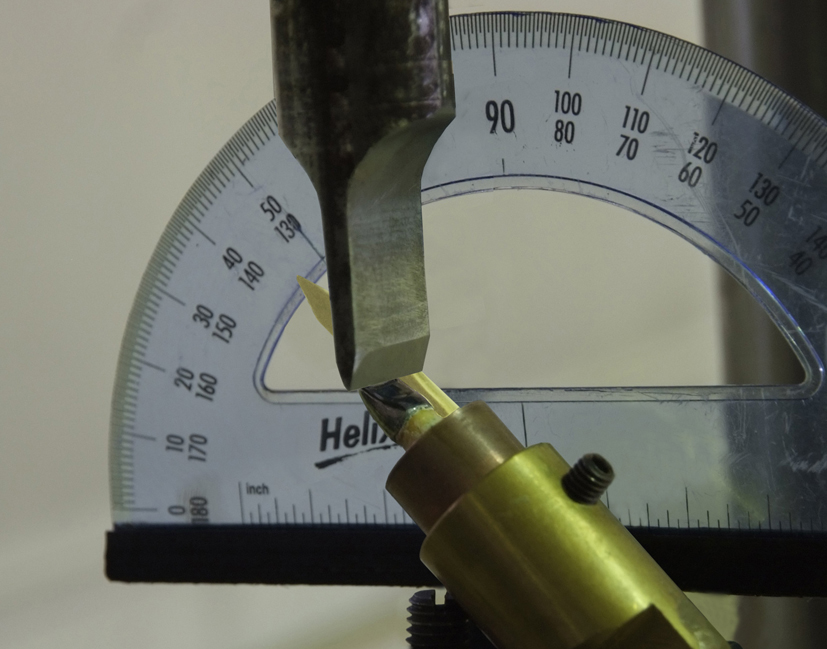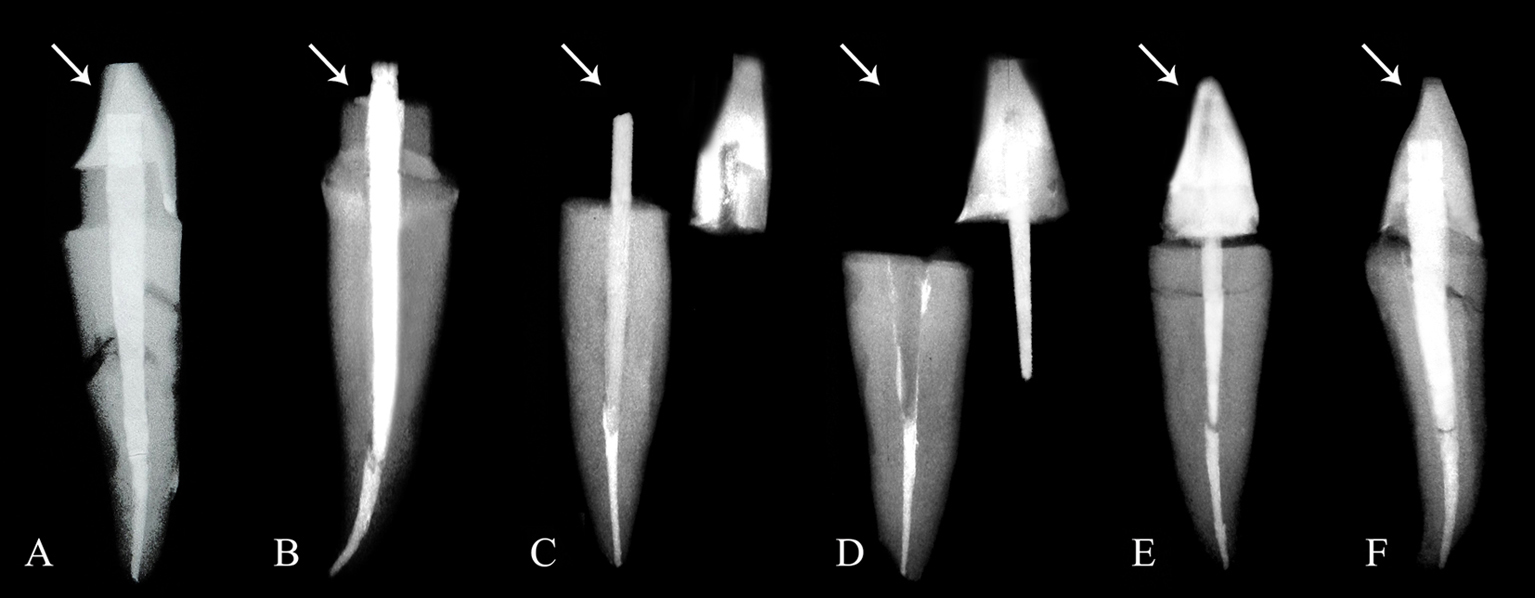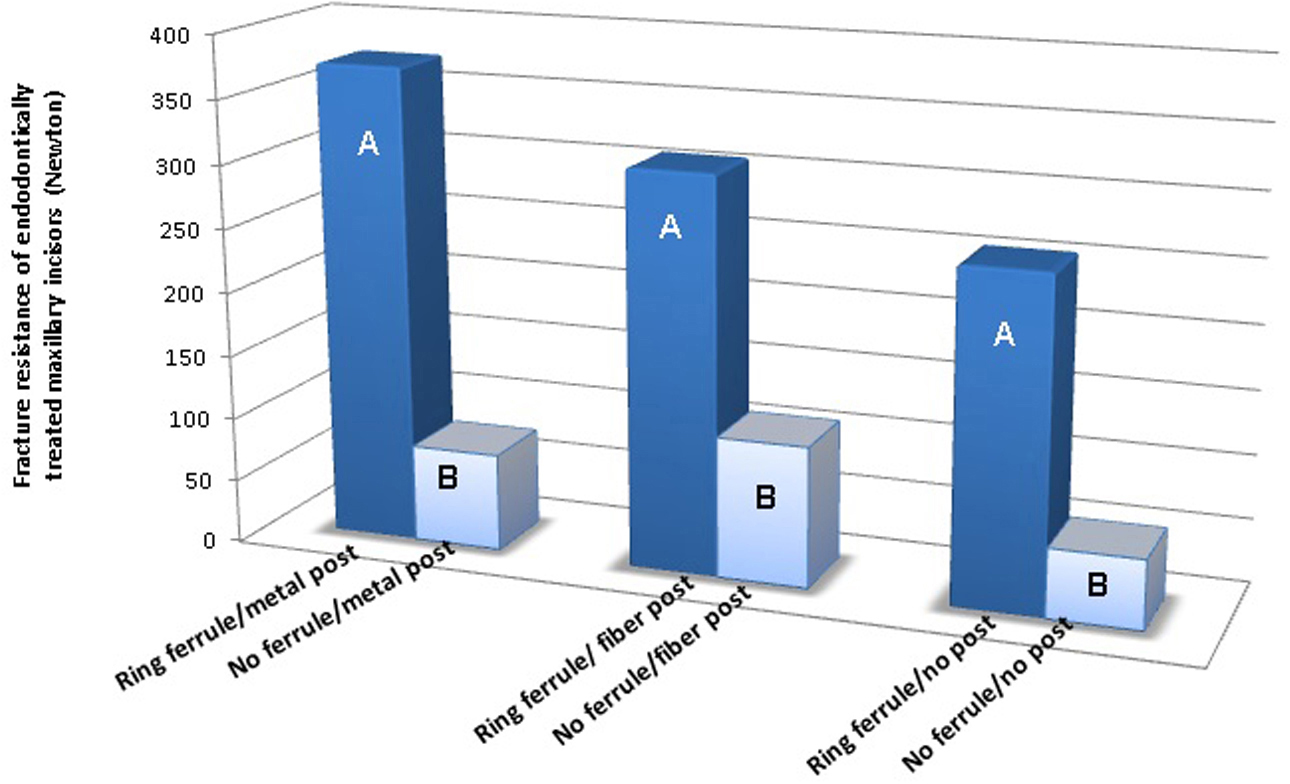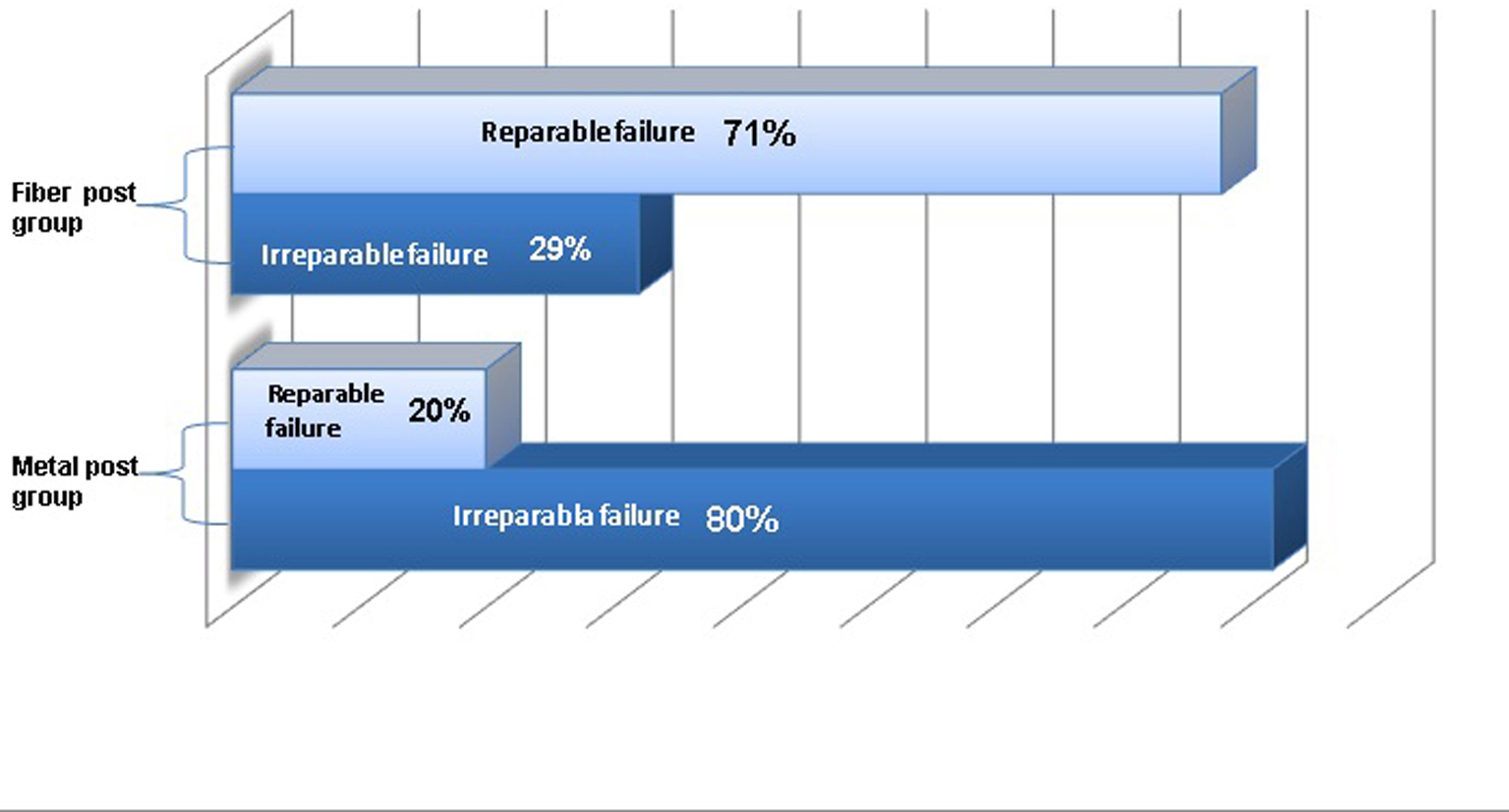
Figure 1. A mounted specimen positioned at 135° angle in a custom made holding grip used in the universal testing machine (MTS 858; MTS Systems Corp., Eden Prairie, MN, USA) employed for fracture resistance testing (From Amin et. al. JMMS; vol.(9):343-352, 2013).

Figure 4. Radiographs of a sample of endodontically treated teeth demonstrating various modes of failure after being subjected to fracture resistance test. (A) a metal post restored specimen with a full-ring coronal dentin ferrule showing an irreparable middle third root fracture; (B) a metal post restored specimen showing fragmented core without post fracture; (C) a fiber post restored specimen showing core debonding without post fracture; (D) a fiber post restored tooth displaying root/post adhesive failure; (E) a fiber post restored tooth demonstrating a crown-core-post complex fracture with cracks extending above the assumed bone level; (F) a fiber post restored tooth exhibiting an irreparable crown-core-post complex fracture with a palato-labial oblique crack running below the simulated bone level.



